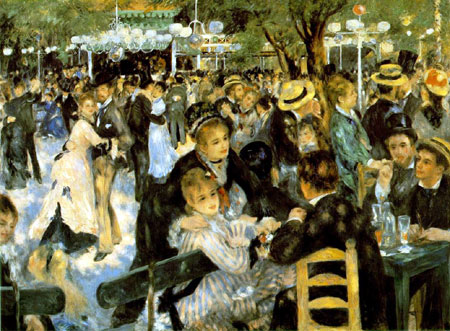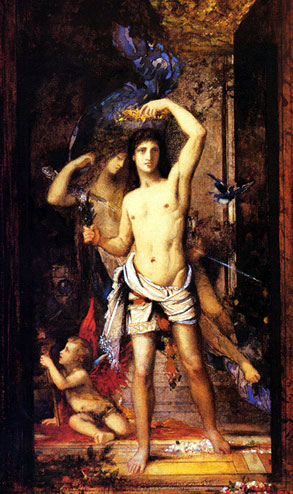|
But when finishing a great, as opposed to merely good, book we can soften or avoid the trauma of rupture by promising ourselves to read it again, perhaps even in the original language in the case of a translation.
This is how Eric Karpeles came to read Marcel Proust's "A la recherche du temps perdu" (In Search of Lost Time) five times—once a decade since he first read the first volume, "Swann's Way," under the special guidance of a perceptive high school teacher who saw in him a serious reader. The brilliance and complexity of the narrative, the characters and their affairs of the heart, and the subtlety of the language pulled him through the enormous work though he often felt overwhelmed by the staggering amount of imagery and information as well as perhaps the legendary length and complexity of individual sentences which can cause dizzy spells by their intricate weave. Upon approaching the volumes for the forth and fifth times, Karpeles was familiar enough with the narrative and characters to begin to wonder about the numerous references that he could not readily decipher. As a painter who had studied art history and viewed all of the great collections in Europe, he was especially intrigued by the references to painters and specific aspects or characters depicted in their work.
 |
This intrigue soon led to an obsession as he began to notate every reference to a painter or painting until he amassed over three hundred notes. This is how his 2008 book, "Paintings in Proust" (Thames & Hudson) came into being. The author wanted to create a guide and reference for readers who, like himself, were not always certain they could perfectly envision the exact painting in question. The result is a beautiful volume replete with paintings, extracts from Proust, and brief explanations of context.
As Karpeles points out, Marcel Proust is often thought of and referred to as a social climber and bon vivant. These dismissive references and the implication that he simply dashed off his masterpiece in between salons and soirées are unfair and not wholly accurate. Close examination of the sheer number and detail of references to painters and paintings reveal someone, like his main character in the first volume, Charles Swann, who made a serious and significant investment of time studying the contents of France's renowned museums, private collections as well as auction catalogs and libraries.
 |
Literary artists have long been inspired by the visual arts and artists. Gustave Flaubert was passionately inspired when he visited Italy with his parents and first saw the "Temptation of Saint Antony" by Flemish artist Pieter Brueghel. The painting haunted him as he devoted decades to writing and rewriting what he considered to be his masterwork, La Tentation de Saint Antoine. According to Flaubert's biographer, it offered him "a way to visit a dark corner of the ancient world, a place crawling with exotic heresies, perverse mortifications, and feverishly ambiguous visions of the divine."
Karpeles refers to a term of classical rhetoric "ekphrasis" which defines the process of using language to describe a work of art, whether real or imagined.
Perhaps the most well known example would be Oscar Wilde's "The Picture of Dorian Gray" published in 1890, featuring a portrait of the young Dorian Gray as the main focus of the story. Will Self followed up with his "Dorian: An Imitation" in 2002 in which a multi-media series of images replaced the oil portrait from Wilde's original. Karpeles quotes Henry James on the subject of this type of inspiration: "what the verbal artist would like to do would be to find out the secret of the pictorial, to drink at the same fountain."
As the introduction to Paintings in Proust describes,
"Like the Labryinthine galleries of the Louvre frequented by the young Marcel Proust and his friends, A la recherche du temps perdu houses a vast repository of paintings. In the novel, over one hundred artists are named, spanning the history of the art form from the trecento to the twentieth century, from primitivism to futurism, from Giotto to Léon Bakst. Whether plunging into Proust for the first or fifth time, each reader encounters many esoteric and increasingly obscure pictorial references that keep testing his mettle. These can leave him nodding his head, with a smile frozen on his face just like the Princess de Parme."
The reference to Princess de Parme is an amusing exchange during which Madame de Guermantes is reminded of Gustave Moreau's Death and the Young Man and assumes the Princess can bring the image readily to mind. In fact, her Highness "did not know so much as the painter's name, nodded her head vehemently and smiled ardently, in order to manifest her admiration for this picture. But the intensity of her mimicry could not fill the place of that light which is absent from our eyes so long as we do not understand what people are talking to us about."
Karpeles labored for over three years to create this wonderful book to prevent such embarrassing moments from happening to us.
|

